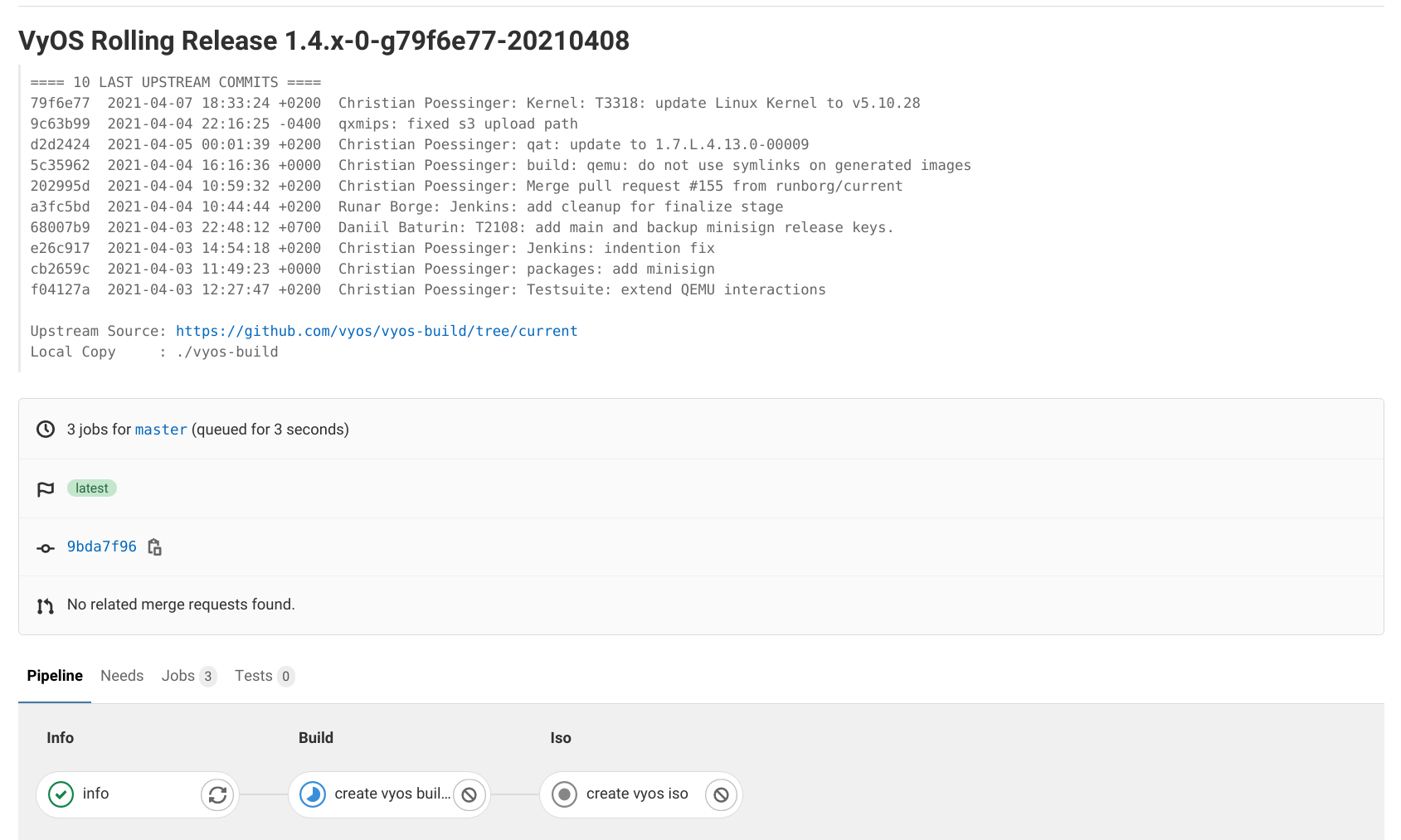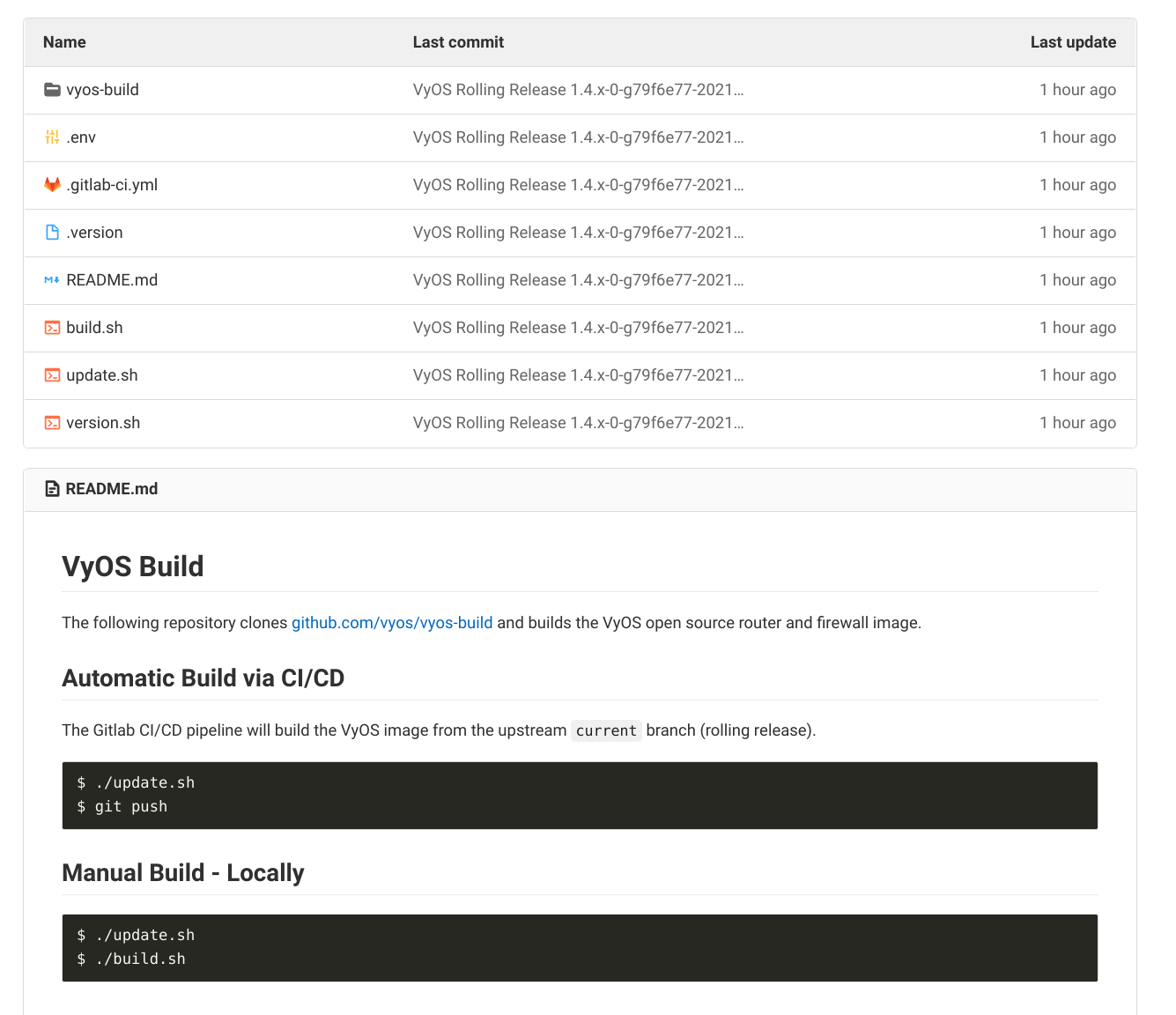Vyos - Between Rolling Releases, Stability and Security
The following article introduces the reader to the deployment of the network appliance VyOS with the help of Continuous Integration & Deployment processes. The main goal is to control the full life cycle of an open source firewall and router, starting from the creation of the install/update iso image.
What is VyOS?
VyOS is an open source network operating system based on Debian GNU/Linux.
With the help of Gitlab CI/CD we will semi-automatically generate a VyOS ISO image that can be used as install medium and more importantly to update an existing installation.
What do we want to achieve?
- Clone and commit the upstream build tools used to generate the image
- Store the final generated ISO image as artifact in Gitlab
- Have a version number that identifies the release branch, the specific commit message via git hash and the date
- Have author information with name and email of the person that generated the ISO image.
- Have an audit log that allows to trace back how the ISO image was generated (and in the future what went into it)
- Have everything internal so that it is robust against external tampering and mistakes
The following screenshot shows the running vyos-build docker image creation and the iso generation job.

Please note that for audit reasons and to prevent future supply chain attacks the internal commit message includes the 10 last commit messages of the upstream vyos/vyos-build repository and the content of the upstream vyos-build repository used to generate the VyOS ISO image.
The content of the internal repository, including the upstream vyos-build directory is shown in the screenshot below.

The important jobs in the Gitlab CI/CD pipeline are outlined below. The
code snippet is taken from the .gitlab-ci.yml file in the root directory
of the repository.
stages:
- build
- iso
create vyos builder:
stage: build
image:
name: gcr.io/kaniko-project/executor:debug
entrypoint: ['']
tags:
- privileged
script:
- cat ${INTERNAL_ROOT_CA_FILE} >> /kaniko/ssl/certs/additional-ca-cert-bundle.crt
- echo "{\"auths\":{\"$CI_REGISTRY\":{\"username\":\"$CI_REGISTRY_USER\",\"password\":\"$CI_REGISTRY_PASSWORD\"}}}" \
> /kaniko/.docker/config.json
- /kaniko/executor --context $CI_PROJECT_DIR/vyos-build/docker \
--dockerfile $CI_PROJECT_DIR/vyos-build/docker/Dockerfile \
--destination $CI_REGISTRY_IMAGE/builder:${CI_COMMIT_REF_NAME}
only:
- master
- "1.3"
create vyos iso:
stage: iso
image:
name: registry.local.xy/infrastructure/vyos-image/builder:${CI_COMMIT_REF_NAME}
entrypoint: [""]
tags:
- privileged
before_script:
- VERSION=$(<./.version)
- AUTHOR="${GITLAB_USER_NAME} <${GITLAB_USER_EMAIL}>"
- cd ./vyos-build/
script:
- ./configure --architecture amd64 --build-by "${AUTHOR}" --build-type release --version "${VERSION}" --custom-package vim
- cat build/build-config.json
- sudo make iso
artifacts:
paths:
- ./vyos-build/build/live-image-amd64.hybrid.iso
expire_in: 1 month
only:
- master
- "1.3"
We create a iso image from the 1.3 (upcoming/current stable version) and the master (rolling release) branch.
The mapping between inernal feature branches and upsream versions is outlined in the ./.env file below.
declare -A versions
versions[1.3]="1.3"
versions[1.4]="1.4"
versions[master]="1.4"
declare -A branches
branches[1.3]="equuleus"
branches[1.4]="current"
branches[master]="current"
VERSION=${versions[$(git branch --show-current)]}
BRANCH=${branches[$(git branch --show-current)]}
